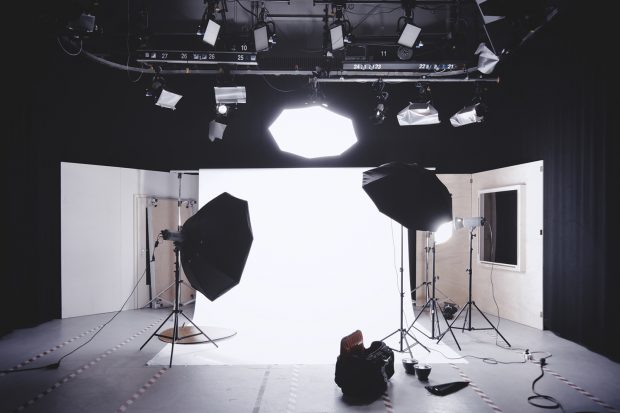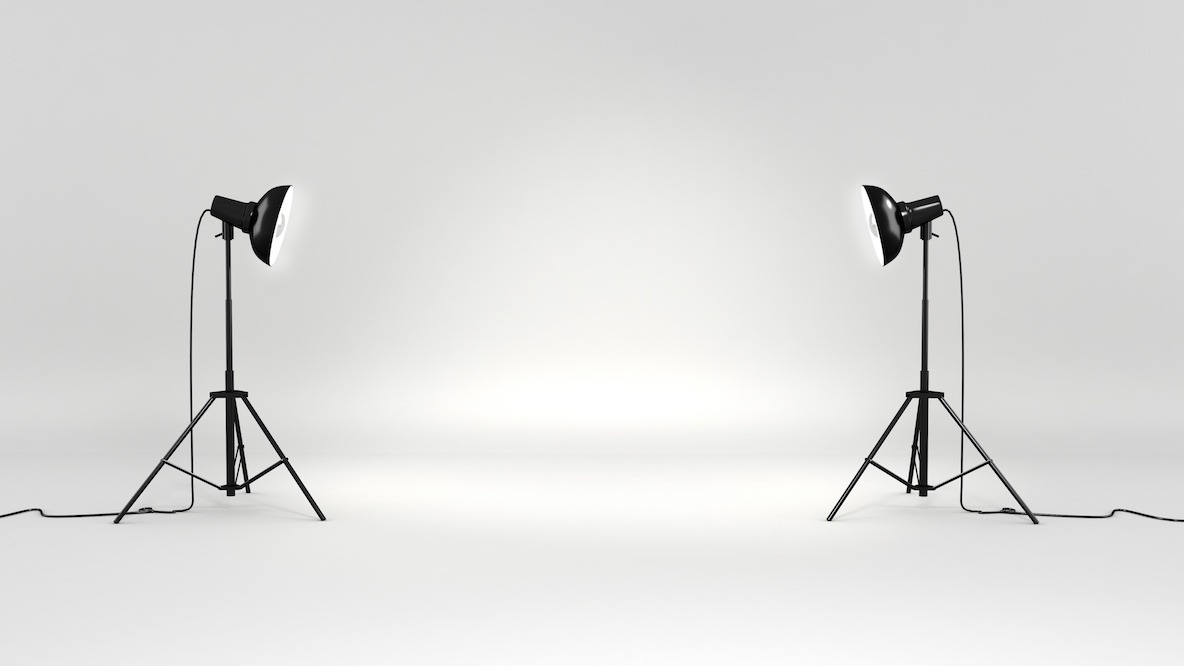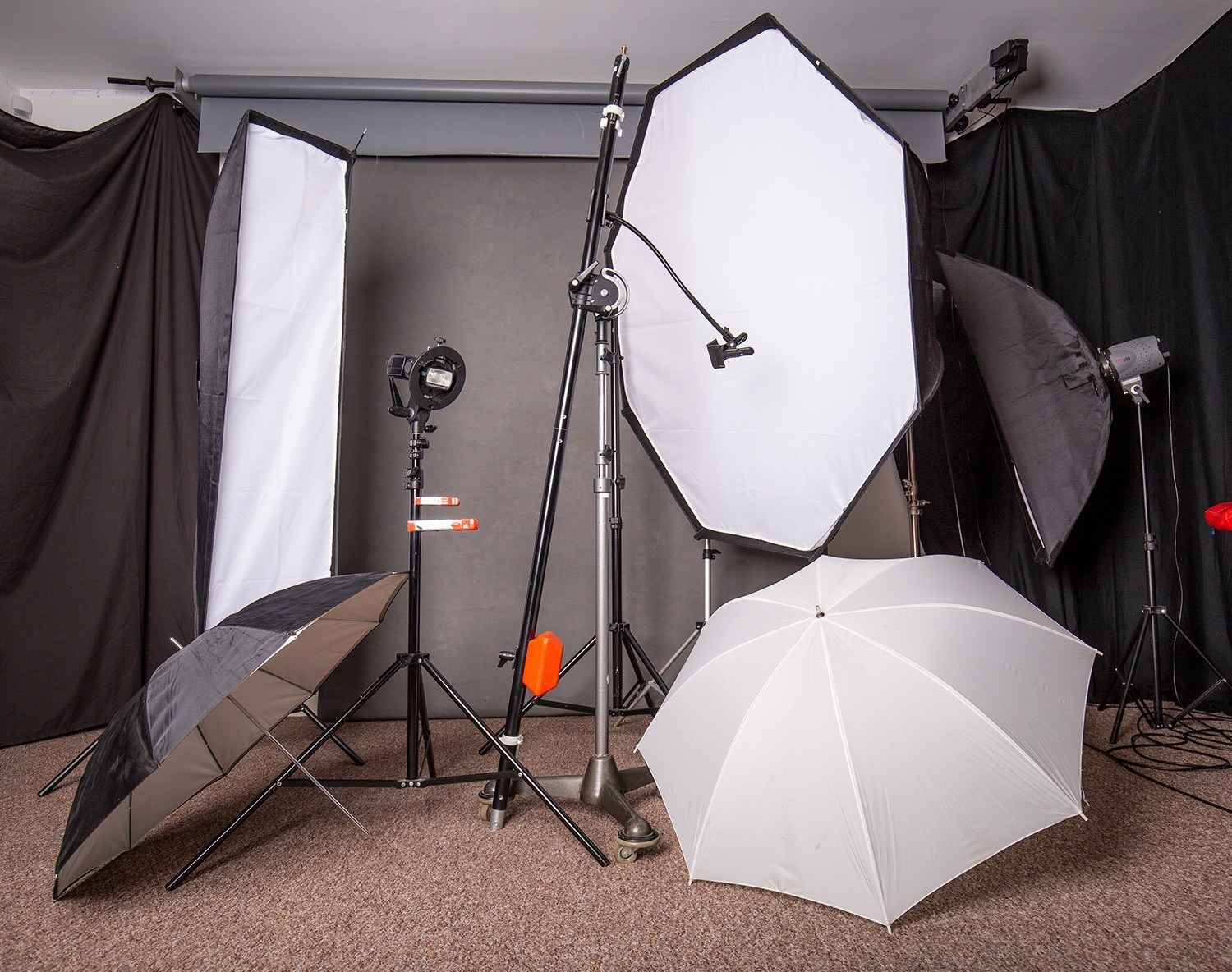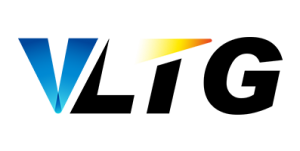Your Comprehensive Guide on Studio Lighting Technique
Lighting is one of the most important and complicated aspects of photography. Although it is one of the most critical aspects, lighting is still underappreciated. For this reason, beginners just pick up their camera and start shooting without giving any importance to studio lighting. The only thing they tend to do is add on a strobe light when it gets too dark. But, this should not be the case. There are a few studio lighting techniques that every photographer should master. These basic techniques will not only make you a good photographer but help you stand out among the other professional photographers as well.
This article covers everything about studio lighting and the basic techniques that you should learn. Keep reading!

Why Is Learning Studio Lighting Technique Important?
The correct use of studio lights allows you to experiment with different lights in a controlled environment. Not only this, but there are many other advantages of using studio lights as well. Let’s check out some of them below.
Allows you to be More Creative
While many people think that studio lights are all about typical over-edited indoor photography, this is not the case. That is a commercial fashion retail shot and family photoshoot that you are thinking of. These are the types of photography that are surrounded by a pretty dull colored background. But, you can get a lot more creative when you use the correct studio lights. With the help of the studio flash heads, you can manipulate light in many different exciting ways. These lights are great because they are extremely powerful and beat portable flash and continuous light. As a result, they allow you to be more creative than any other typical light used in a studio.
Does Not Limit You to the Time of Day
Another best thing about studio lighting is that these lights do not make you the slave of the day. You can shoot any time you want to without worrying about the time or the weather. With the studio lights, you have complete control over your lighting shape, direction, and strength. It is truly a blessing in disguise for all the photographers out there. If you also do not want to be limited by the time of the day, you must also learn different studio lighting techniques. These lights are no doubt much reliable than natural lights.
Allows You to Create Timeless Shots
Allowing the photographers to create timeless shots is another considerable advantage of the studio lights. You can now create timeless, polished, and clean photos in whatever environment that you want. No matter what the need of the photography is, these lights are flexible enough to adapt to different photography needs. For this reason, these lights remain a popular choice among corporate headshots, clothing retailers, modeling portfolios, and family photography. So, if you haven’t already started learning the different studio lighting techniques, now is the time to do so.
Different Colors and Intensities
When you use LED studio lights in your studio, you can add different colors and intensities to the photoshoot that you are conducting. That’s because LED lights can be used in different colors. A lot of LED lights out there are dimmable. You can bring them down or light them up with the help of a controller. That’s what gives you more power over the lights that you are utilizing. It will not bring out your creative side, but these lights will save you from a lot of editing later on. For this reason, they are one of the most popular lights used in the studio as well.
The Lights Remain Cool
While the traditional studio lights heat up more quickly, this is not the case with modern fixtures such as LED lights. Professional studio lights such as LED lamps do not generate any warmth. Therefore, you can quickly leave them turned on for hours. No matter how long you leave them turned on, they will always stay cool. For this reason, the LED studio lights are known as the safest lights out there. They reduce the risk of burns and fires by a great deal.
What are the Types of Lights Used in Studio Lighting?
Different types of lights are used in a studio for various purposes. But, the primary function of all these lights is to provide the best lights to the photographers to come up with the best pictures. Let’s check out some standard studio lights below.
Strobe Lights
When it comes to photography, strobe lights are the most versatile lights out there. Although these lights are a bit expensive compared to other studio lights out there, they offer great control and versatility to the photographers. Moreover, the power output of these lights is incredible as well. There are some brands of strobe lights that even let you control the temperature of the lights as well. What’s more, these lights are available with a wide range of modifiers. Some of these modifiers include simple umbrellas and professional-level Fresnel. So, if you want the best studio lights to work with, you must go with strobe lights.
Speedlight
Speedlight are not only easy to use, but they are pretty cheap as well. For this reason, these lights are used by beginners to provide an introduction to using flash. You can easily use these lights both on and off camera. But, these lights are not as easily modified as strobe lights. For this reason, they do not offer the same level of creativity and control that the strobe lights do. But, on the brighter side, the flash duration of these lights is exceptionally great. This is what makes them best for freezing motion. As a result, you can capture some fantastic product images with the help of these lights.
Continuous Lights
Just as the name indicates, continuous lights provide a constant light source to the photographers. This makes these lights different from strobe lights, as strobe lights offer a flash to light up the subject. They are high-powered lamps in which a modifier can be fitted in the same way as strobe lights. Although primarily used in videography, continuous lights are used for many genres of photography. But, they are not as versatile or precise as strobe lights. For this reason, strobe lights are taking over these lights fast.
The Power System Used in Studio Lighting
When it comes to flash lighting, there are different power systems used in studios. The two central power systems that the photographers use are monoblock lights and pack system lights. Let’s take a look at the different power systems below.

1. Monoblock Lights
A monoblock power system is a system that is not powered by an AC power source. This is what allows the easy fitting of the light modification attachments on it. Monoblock lights are significantly bigger than the pack system lights. That’s because of the power supply used in it. The capacitor is placed inside the head of the light. This is what makes them bigger. The monoblock power system offers variable output settings to the users. The most valuable feature of this power system is that the users can preview the effect of the flash and match the flash setting output with it.
2. Pack System Lights
Pack lights is a power system that depends upon an external power supply. The external power system on which pack lights rely is known as a power pack. Since they use an external power system, they can offer a lot more power to the users as compared to monoblock lights. They can hold bigger capacitors as well. Moreover, the users can also plug a lot of different lights into one pack. This power system allows the users to control all of the lights independently. Pack system lights have a smaller headlamp as compared to monoblock lights. This is what makes them more stable because they do not tip over easily.
Modifiers Used in Studio Lighting
The studio lighting is incomplete without modifiers. Some common modifiers used in studio lights are mentioned below. Let’s check them out.
Umbrellas
The umbrellas used in studios are usually available in silver or white color. You can attach the umbrella to your strobe lights with the help of a mount. By connecting your strobe light to the umbrella, you will be able to create a huge light source. This significant light source will provide you with a much softer light. Although the umbrellas used in the studios are primarily directional, some can have a lot of spills. For this reason, they are not as easy to control as other modifiers out there.
Translucent Umbrellas
Translucent umbrellas are the ones that do not reflect any light to the photographers. These umbrellas are made of diffusion material that helps you aim the light through them. As a result, you get the soft lights just like any other modifier. But, you will not get the benefit of directionality while using the translucent umbrellas.
Softboxes
Another important modifier used in the studios is the softboxes. These boxes are available in different shapes and sizes. When you attach the softbox to your light, it provides a more defined shape to the photographers. Additionally, it also softens the light to make it more flattering. Moreover, these boxes are incredibly directional and easy to control. For this reason, they can be further modified quite easily.
Strip Boxes
Strip boxes are almost the same as softboxes. But, they are a bit longer and narrower than the softboxes. As a result, they are capable of producing a much narrower beam of light. If you want to light the subject from behind to get a rim lighting effect, these modifiers are the perfect option.
Octaboxes
Octaboxes are another type of softbox. They are called octa boxes because they are octagonal. This light source is helpful for shaping the light. For this reason, they are trendy in portrait photography. Moreover, these modifiers are pretty large in shape as well. This is what makes them an ideal modifier for portraits.
Reflectors
It is a type of modifier that you attach directly to your strobe lights. They provide highly directional lights to the users by channeling the light in a specific direction. Moreover, they are a tough light source as well. For this reason, they are designed to take a variety of grids.
Snoots
Snoots are a kind of modifier that helps you create a very narrow light beam. They are designed in such a way that they focus on the light to produce a narrow beam. This is why they are great for both background and hair lights.
Beauty Dishes
Beauty dishes are one of the directional modifiers. These modifiers are a mix of soft and hard lights. Just as the name suggests, they are great for beauty photography. Moreover, they are used in fashion and portraiture as well. To provide variation to the users, they offer grids and diffusion socks to the users.
Barn Doors
Barn doors let the users adjust to the aperture manually. For this reason, they come with two to four flaps as well. The flaps available with barn doors help the users narrow the focus of the light on a specific subject. A typical example is highlighting the hair of the subject.
Honeycombs
Honeycombs are used as modifiers for your modifiers. They are positioned on a reflector, beauty dish, or a softbox. These modifiers ensure that the light is only falling on a specific subject and is not scattering anywhere else. For this reason, they are essential modifiers that every photographer must use.
Some Other Studio Lighting Accessories
Apart from the lights, modifiers, and the power system, a studio requires some other accessories. The use of these accessories will help you with your photography. Let’s check them out below.

Light Stands
Light stands are the most essential accessory that your studio must have. But, before you buy the light stand, you must ensure that it can handle the light of your weight. The strobe light will require a much powerful light stand as compared to a Speedlight. So, no matter what type of lights you are using, make sure that your stand can support them.
Dolly
For those of you who do not know, the dolly is a light stand with wheels attached to it. They can be handy when it comes to moving the light stand.
Backdrop
A backdrop is a surface in whose front you place your subject. There are a variety of backgrounds available out there for you to choose from. Some common examples are paper and vinyl rolls. You can even get decorated walls and painted canvas as your backdrop.
Clamps
Clamps are a fastening device. These devices are available in different shapes and sizes to the users. Clamps are used to hold different types of things in one place. They help the photographers who want to keep their background, reflectors, gels, and other things together.
Some Basic Studio Lighting Techniques That Everyone Should Know
Now that you know all the essential lighting equipment used in a studio, we can move towards studio lighting techniques. If you want to give your photographs a more professional look, then experimenting with the different methods is extremely important. For your ease, we have compiled some basic studio lighting techniques below. You must follow these techniques to make your work stand out among the work of other photographers. Let’s check them out.
Add a Hair Light to Lift Your Subject
While most of the photographers only focus on the subject’s face, this should not be the case. You must focus on the hair of your subjects as well. To focus on your subject’s hair, you will need to add additional lights to the rear of the set. This will provide you with a three-dimensional effect. Moreover, you must position the hair light so that it sitters to one side of the subject. It should not shine directly into the lens of your camera. For this purpose, you need to make the hair light half a stop dimmer than the leading light in your studio.
Use the Tri-Flector Technique
A lot of photographers out there do not know what a tri-flector technique is. If you want to make your work prominent among other photographers, then it is a crucial technique that you must learn. This photography uses three mini reflectors. The mini reflectors are designed into a single unit. You must place these reflectors on a low stand beneath your subject. The reflectors are great for removing shadows from the right, left, and underneath of your subjects. As a result, you will get the most glamorous and stark photographs that were not possible otherwise.
Light the Background
The amateur photographers consider the background of the pictures a secondary thing. That’s why they do not give much importance to it. But, this should not be the case. The background is just as important as any other aspect of photography. Therefore, you should give all the due attention while taking pictures in your studio. Using the right background lights can provide real depth to the pictures that you take. For this reason, you should place a second light behind your model. This will add light to the background, and you will get the most outstanding shots.
Use a Light Meter
Using a light meter is extremely important in photography. Without a light meter, you will have to keep guessing about capturing the correct exposure. A light meter becomes even more critical when you are doing fashion and portrait photography. That’s because there are complex lighting systems involved in these types of photography. Although every professional camera is equipped with a light meter, you will need to learn the correct use of hard and soft lights to work with this meter.
Use Flash at the Right Moment
Even though every professional camera is equipped with flash, it does not mean that you keep using flash whenever you take a picture. It all depends upon the right moment. For example, you must not use flash while you are capturing pictures in a concert. That’s because there are already a lot of lights out there.

Final Thoughts
Using the correct lighting techniques is extremely important in photography. So, if you also want to excel in the field, you must use the studio lighting techniques discussed above. These techniques will surely help you stand out among other photographers. Need more information? Contact us now!



